Some scanning principles
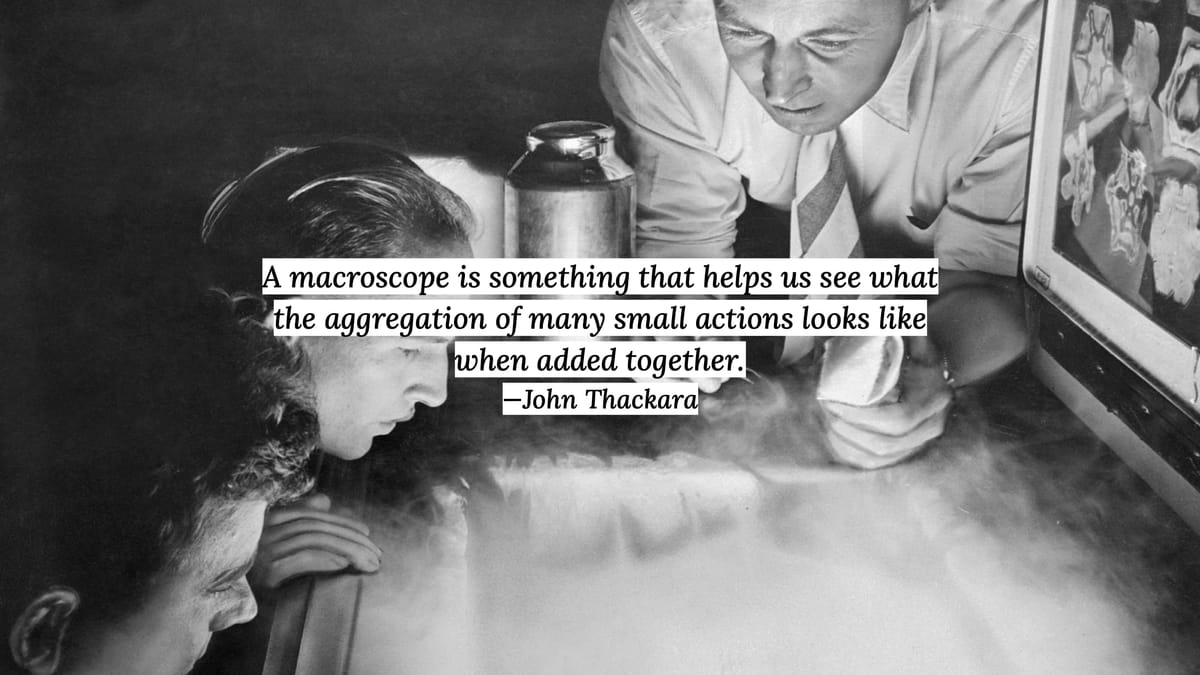
A year or so ago, I gave a short talk at Speculative Futures MTL and have been meaning to flesh out the slides to make them readable without the talk. Finally managed to do it. I can’t remember what the exact brief was, but it ended up being something like a list of principles for scanning.
The talk was really short, so I’m posting it here as a kind of working with the garage door open thing, more than because there are any great new ideas in there. Perhaps some tweaks to how you see things might prove helpful.
The team organizing the workshop already had some visuals, which I repurposed here. This is a pretty classical, if imperfect, way of imaging a few time ranges and the scope or breadth of what a person or team might observe. This is something that can happen just by paying attention to what we see in our day-to-day, but of course, in a strategic and/or foresight setting, this process needs to be purposeful and organized. For this talk I didn’t focus on tools, I’ve written about that elsewhere and will need to revisit my ‘stack’ in an article soon since it has evolved a bit in recent months.
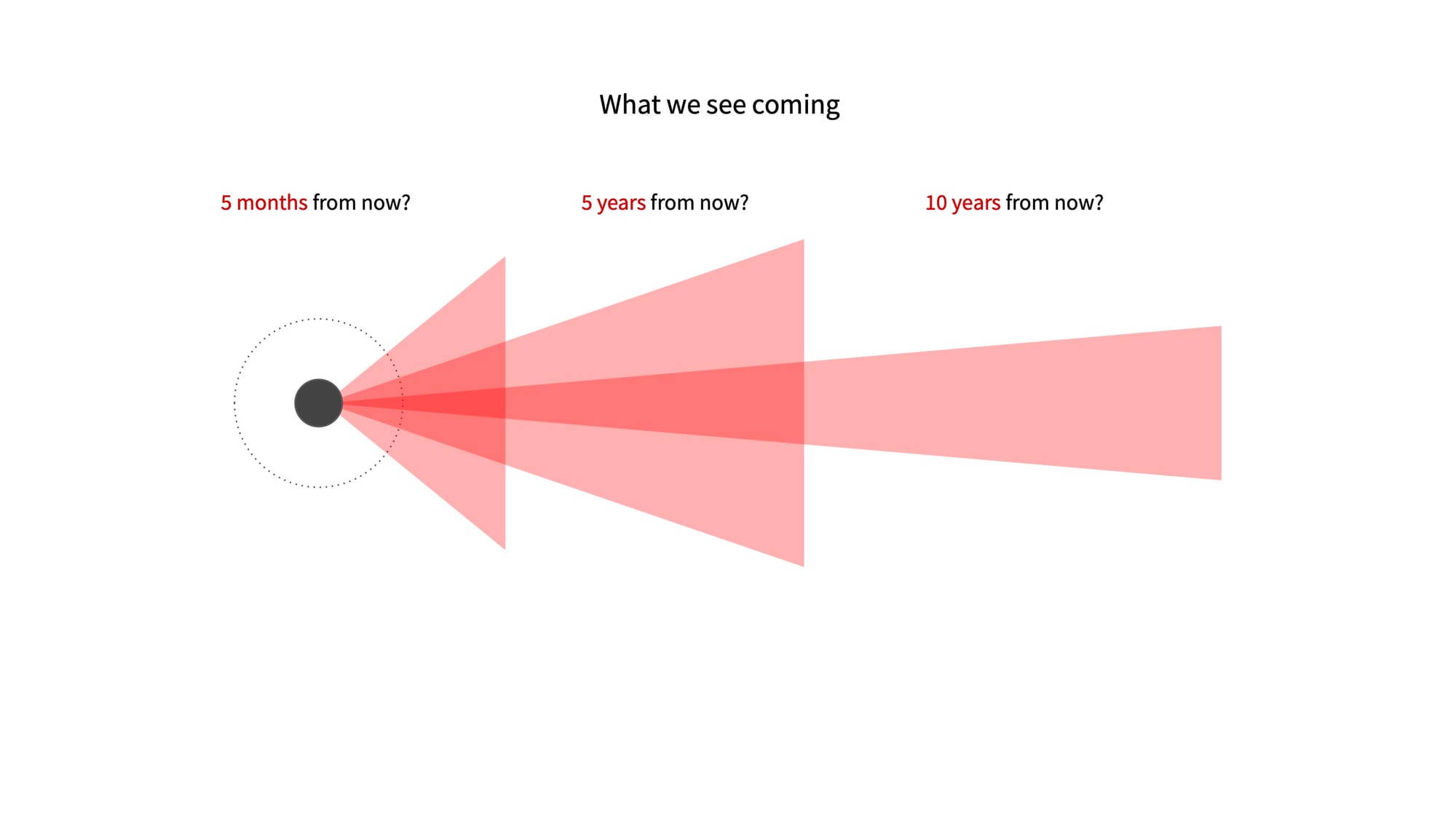
A signal is something you encounter that provides insight or evidence that can shed light on the future. ... The thing or phenomenon itself, the signal - the news items, photo, service, object, story or event that describes the subject, and the interpretation, which refers to how the signal is received, how it is linked to the interpreter’s own view and world view, and how it is used.
(Source: How To Future, p.69)
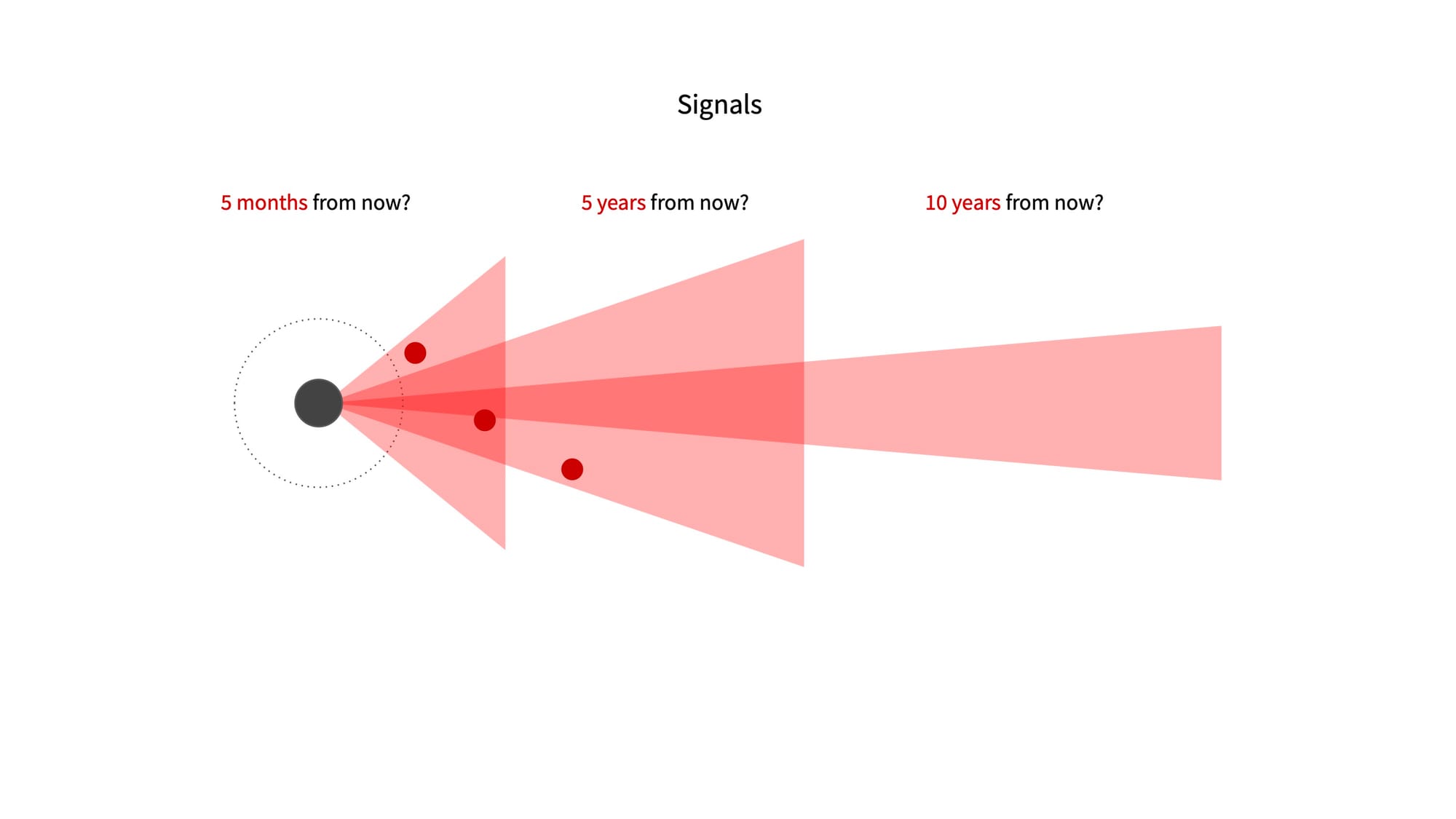
Trends are comprised of signals and supporting evidence that show directional change (increase, decrease, evolution or transition) and in turn may affect what later signals emerge. They do not exist in a vacuum, but as an always evolving complex system.
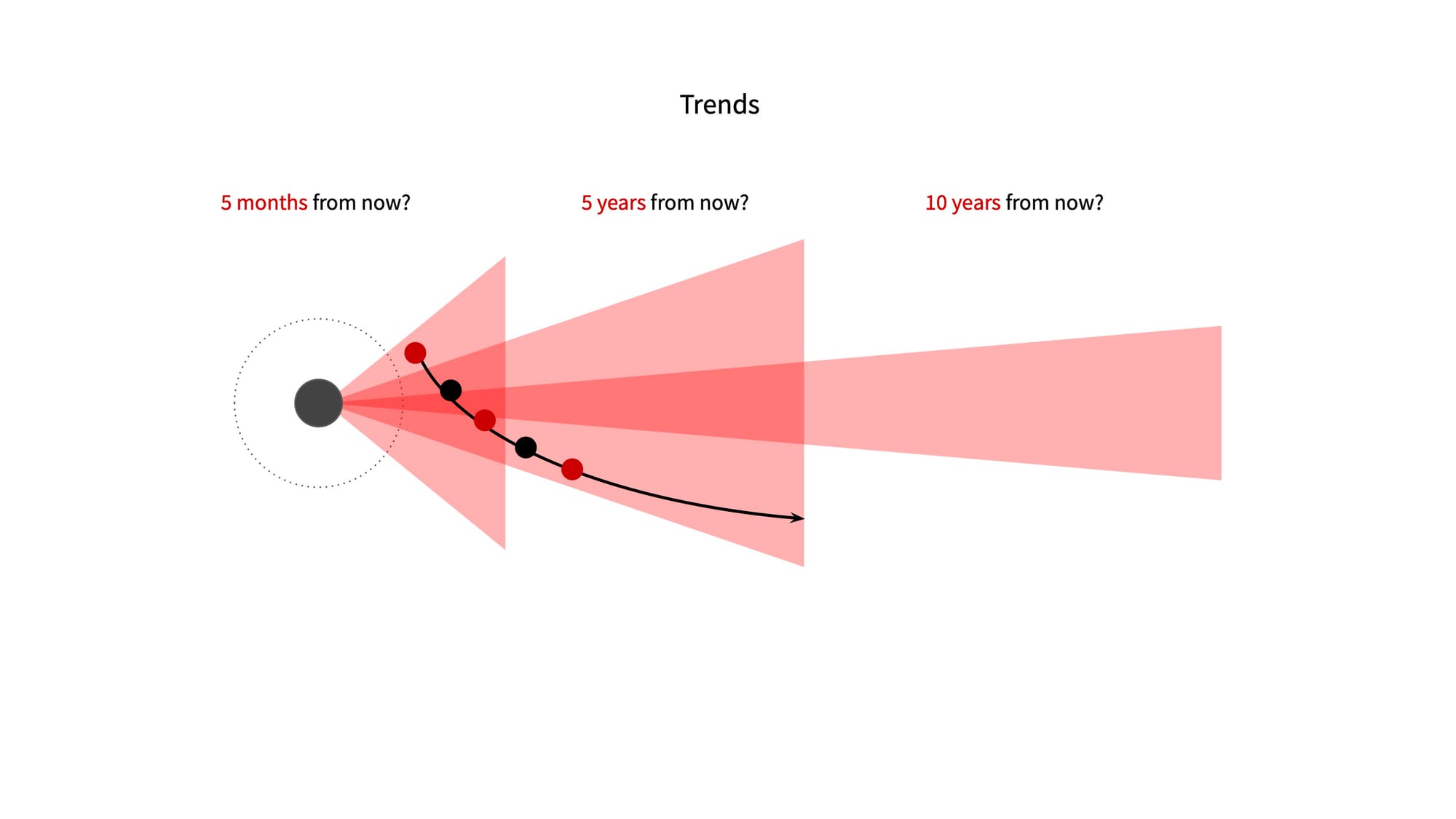
But that’s kind of the “platonic ideal” of observing what’s going on around us. Usually, amidst the day-to-day and incoming project rushes, that vision, that radar, narrows. You don’t read a bunch of things, you read The Economist and two websites, you don’t read a lot of books in a year, you read two.

Not only that, but when it’s time to think ahead and think about things strategically, when it’s time to do some planning and consider options, we also run out of time. So the insufficient signals and trends collected are not even put to work, and plans are only made a year or two in advance. Forget ever thinking about what’s coming in 10 years.
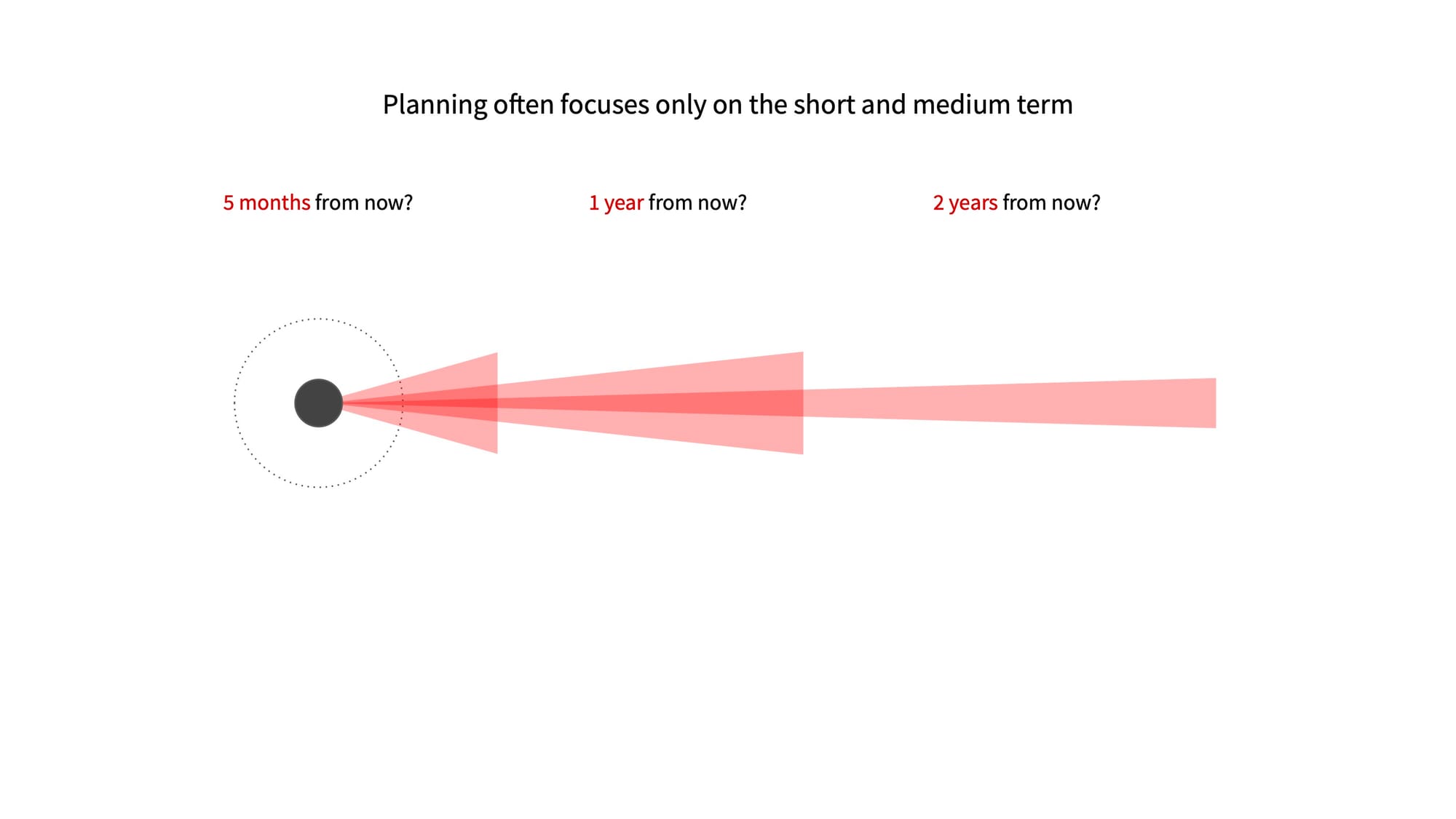
Sorry to bring this up again, you’ve surely read it everywhere, but things are getting more complex, shifts are happening left and right, and whole industries are being disrupted (sorry again). That’s a common enough “diagnostic,” what’s the solution? Look around and keep watch on a lot more than your industry.
The cone and circle image here might not be the perfect metaphor but you get the idea, you have to develop “eyes all around your head” and be able to see what’s coming from outside your industry or from the edge of that industry—remember that too-narrow view? Being at ease in multiple domains, and tracking good sources in each is an increasingly essential skill.

This lets you access a greater variety of perspectives. Let’s say you were trying to understand Uber, Airbnb, or WeWork (or maybe you’re trying to figure out NFTs right now), you can’t just listen to people in the taxi, hospitality, or corporate office spaces, you need more diverse ideas. If you are following sources in each domain above, you’ll get differing opinions from each, which allows you to develop a much richer view and a clearer understanding.
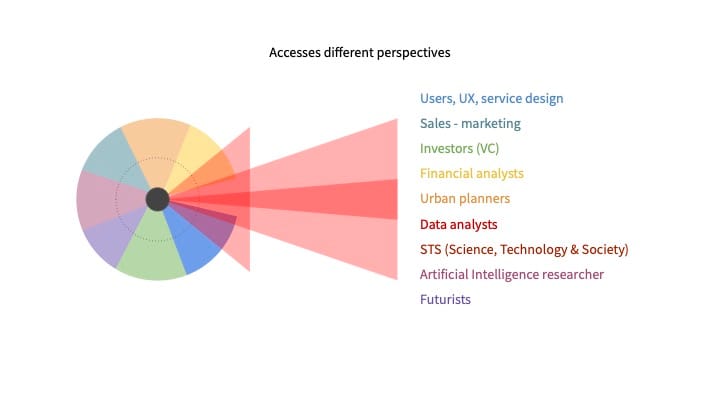
Which gets us back to how an organization can get better at this work. Obviously there are a number of details, from tools, to knowledge transmission, learning, etc. But for this presentation, I’d mention two high-level must-haves.
- Make it something you do in an ongoing manner, not just one-off research for a project. Of course you can do more at that time, but you have to start with an ongoing practice of watching, collecting, and learning.
- Consistency. Whether it’s through an internal team, one person, well-set priorities amidst other tasks, or even collaborating with an external resource, you have to be consistent about it or you are missing and working from imperfect context. (It’s always imperfect, but even less so with no info.)
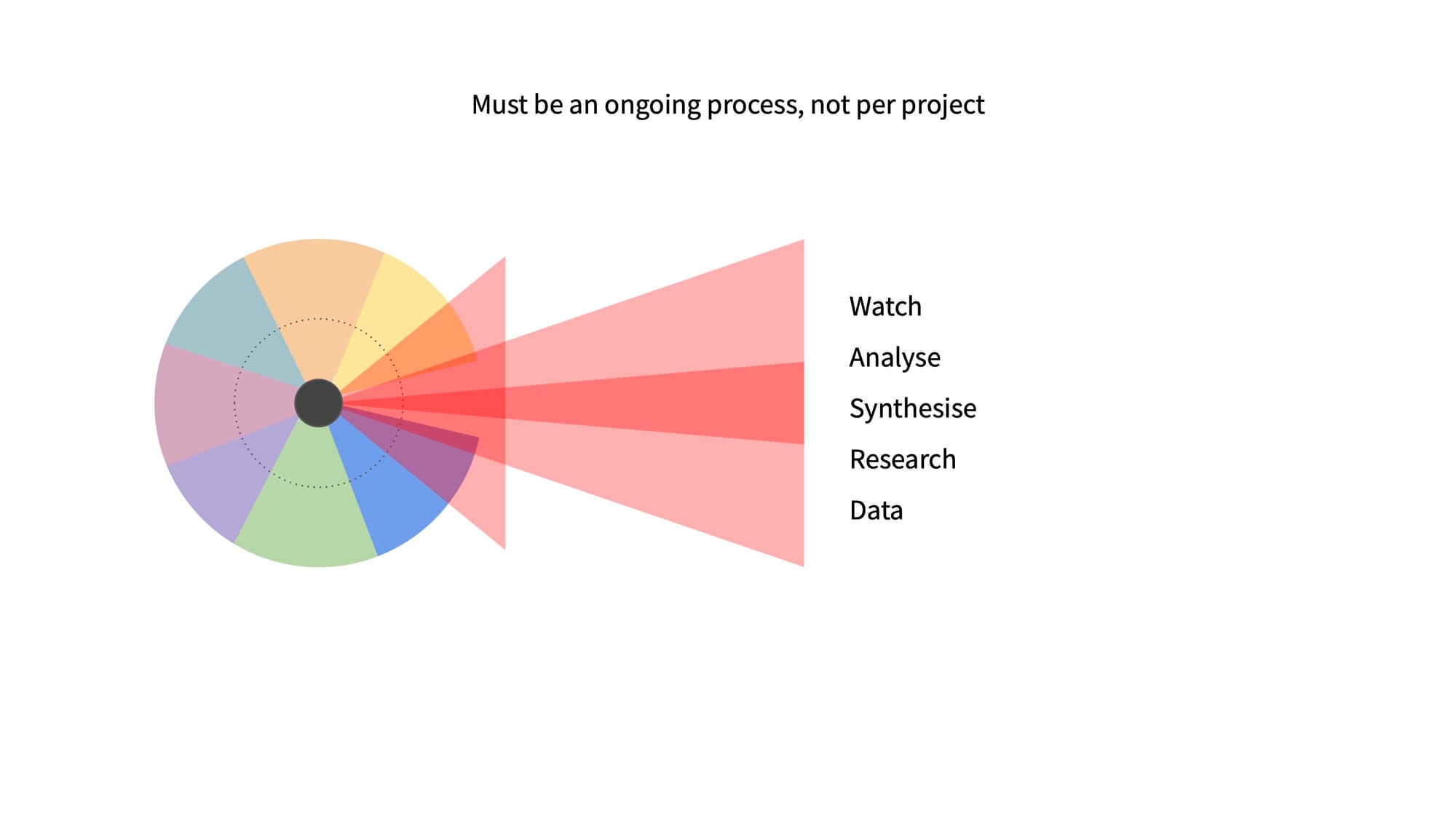
With consistency, a strong practice, a broad outlook, looking far enough ahead, interdisciplinary perspectives, and context, you’ll be able to not only spot signals and single domain trends but also make connections between them and across time.
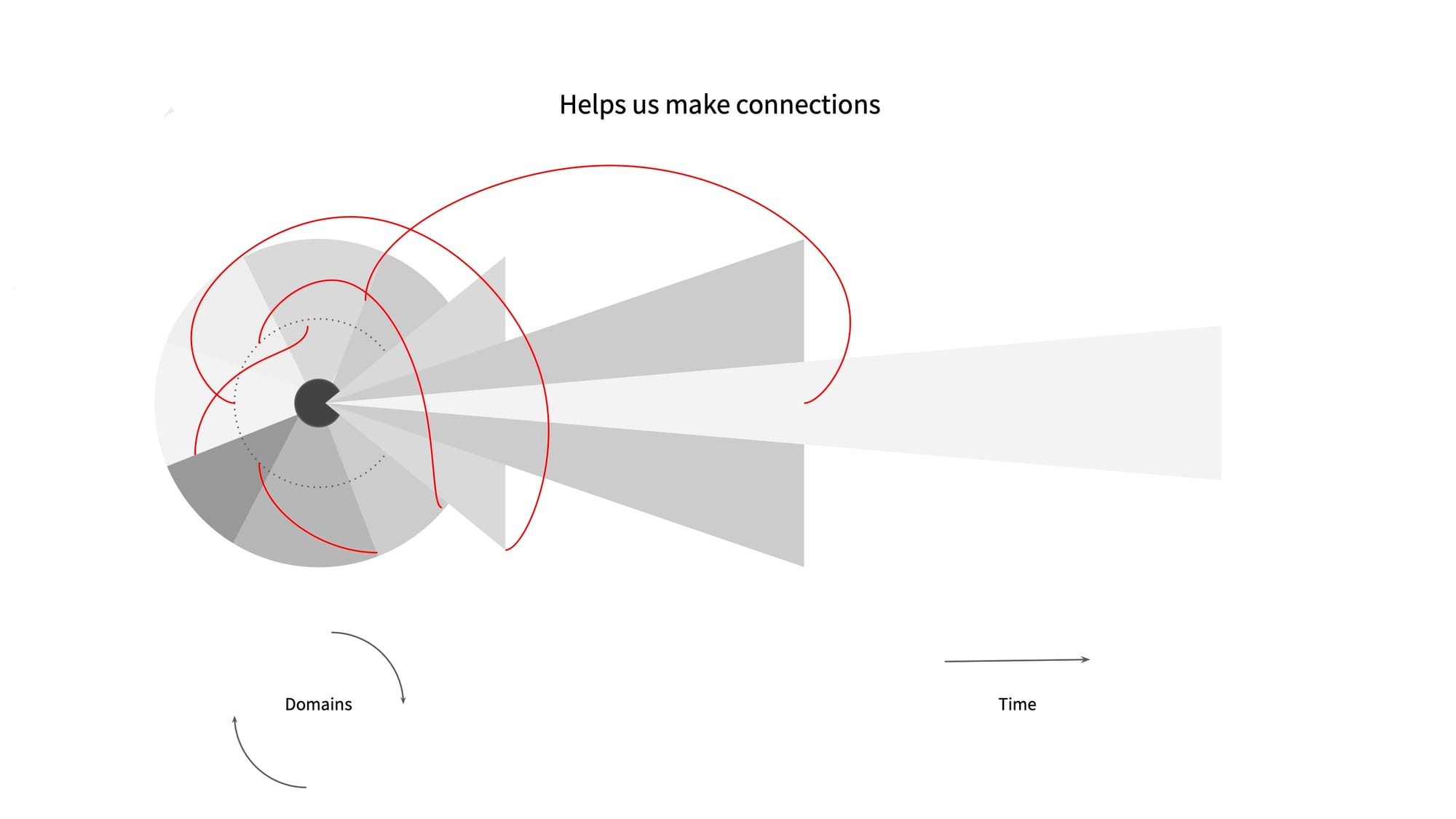
From those signals, trends, and connections, you’ll be able to better understand what you are noticing, synthesize your findings, make sense, and find potential directions and strategies.
Keep in mind, the map is not the territory, and sometimes a bearing and a compass are better than a detailed map.
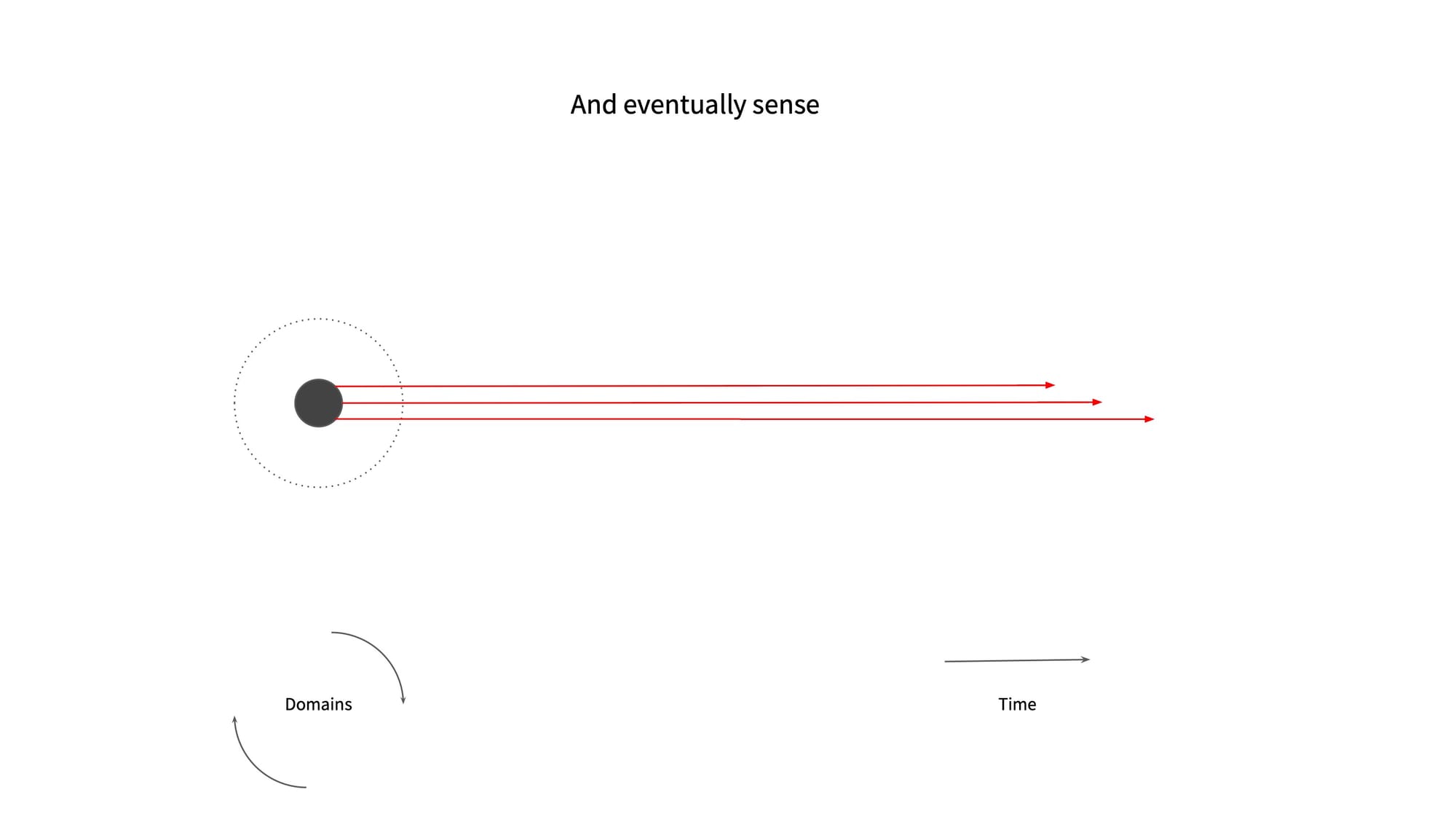
The next level to this practice is to incorporate futures. In two ways. First, add these types of practicians to the sources you are tracking. Specialists of foresight, scenario-makers, science fiction narratives, people inventing futures, speculative designers, etc. There are multiple terms for this kind of work but, basically, you are trying to invent what comes next for your company, so pay attention to the varied ways of creating futures and what’s already out there.
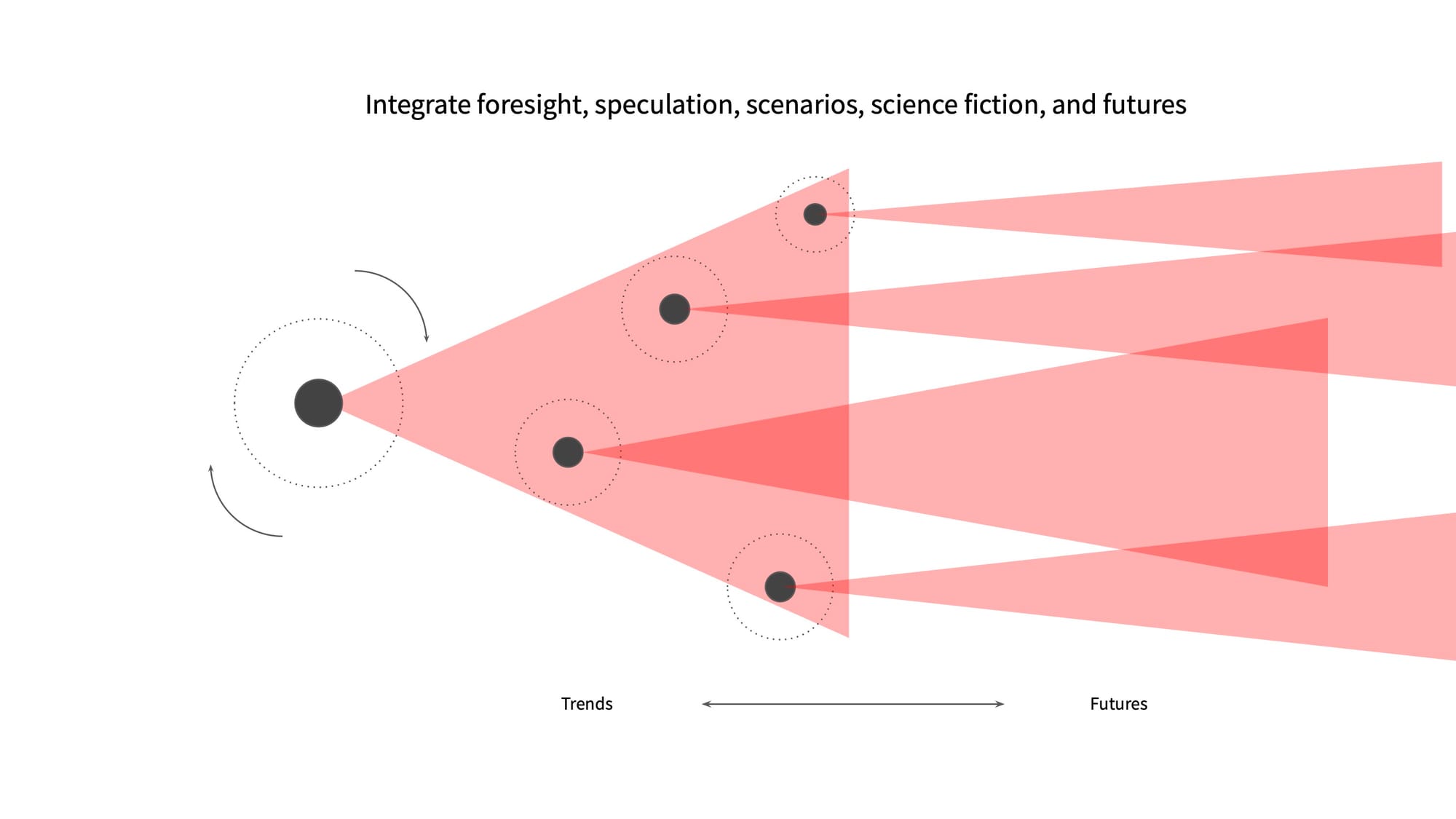
Even better, and in the same vein as the transdisciplinary circle earlier, don’t look only at what’s happening parallel to your work, find sources and projects that point elsewhere. At the very least, you can glean insights you can apply to understanding your own work better.
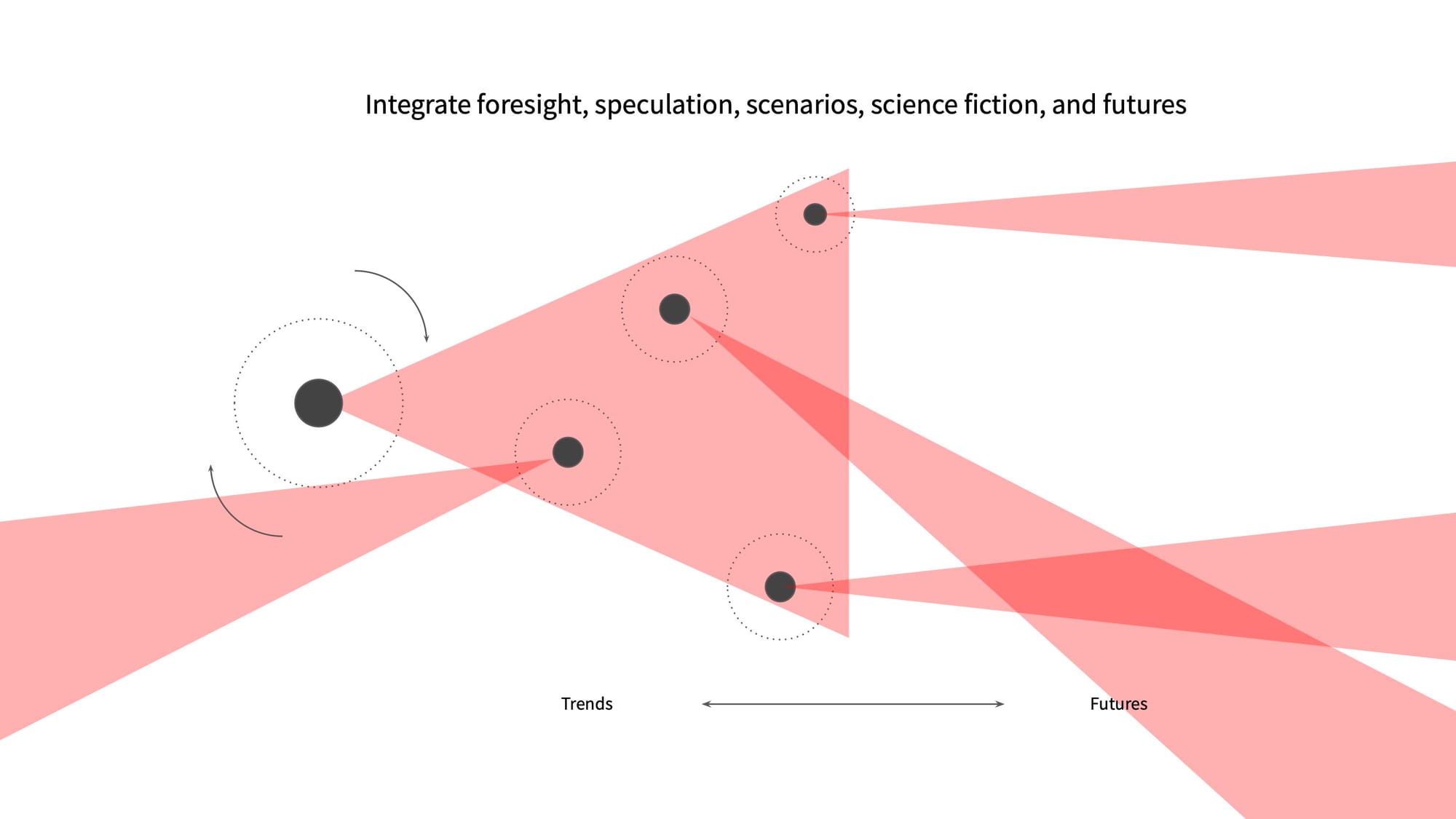
To recap
- Make the time (or pay someone to have the time).
- Look around and keep watch on a lot more than your industry.
- Include a variety of perspectives from different people but also different fields.
- Make it something you do in an ongoing manner, not just one-off research for a project.
- Make connections/find inspiration from other fields.
- Include people looking forward and beyond the short-term, the news is not enough.
- Find and follow people looking in different directions.

John Thackara wasn’t referring to this kind of work when he coined the word “macroscope,” but I like his definition and it does fit well with a practice of knowledge and insight gathering, so I thought I’d conclude with that and…
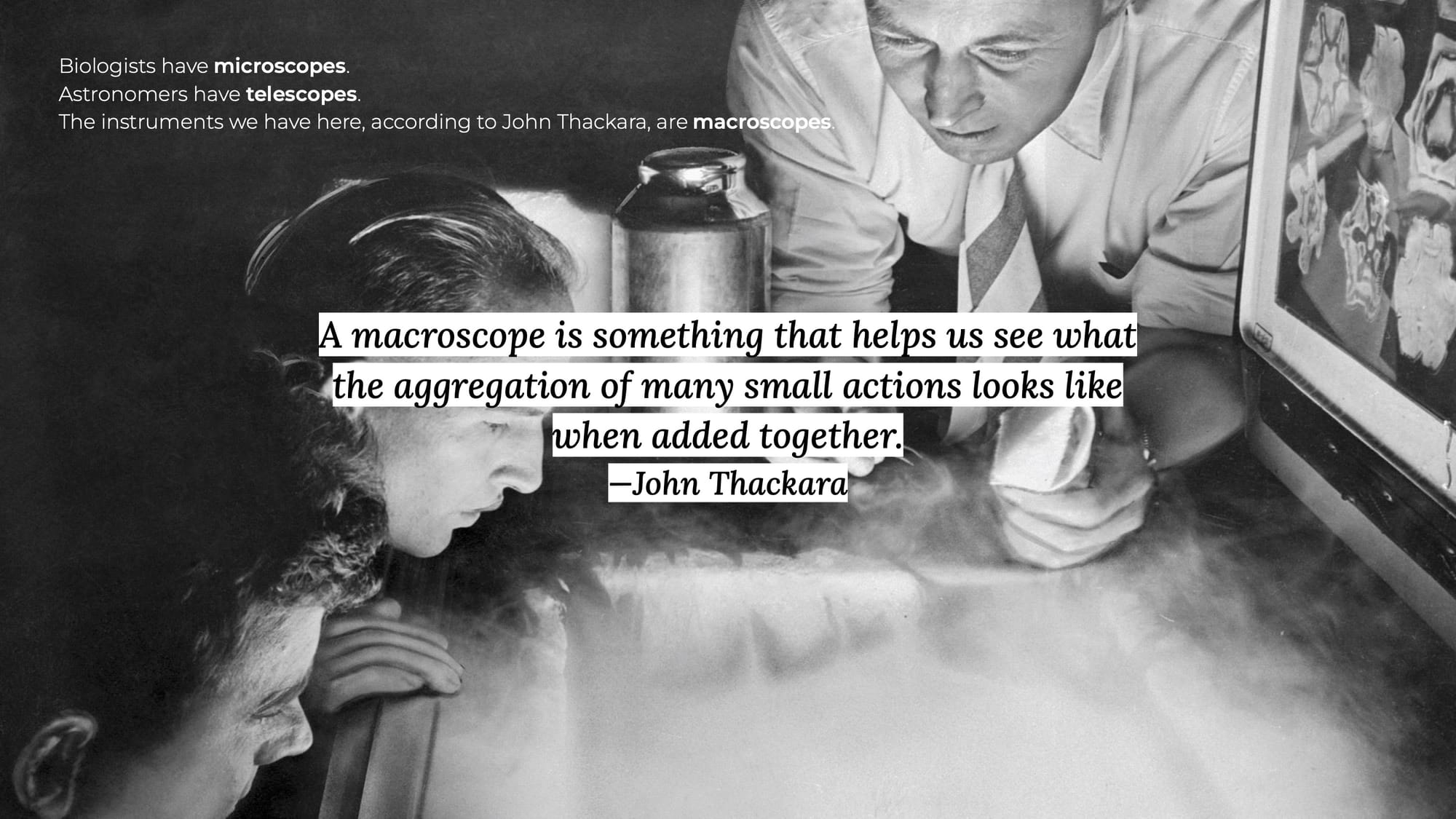
Some favourites quotes to go with this idea of looking at makers of futures and extending your own view. I also encourage you to see them as good “missions” to work on.

